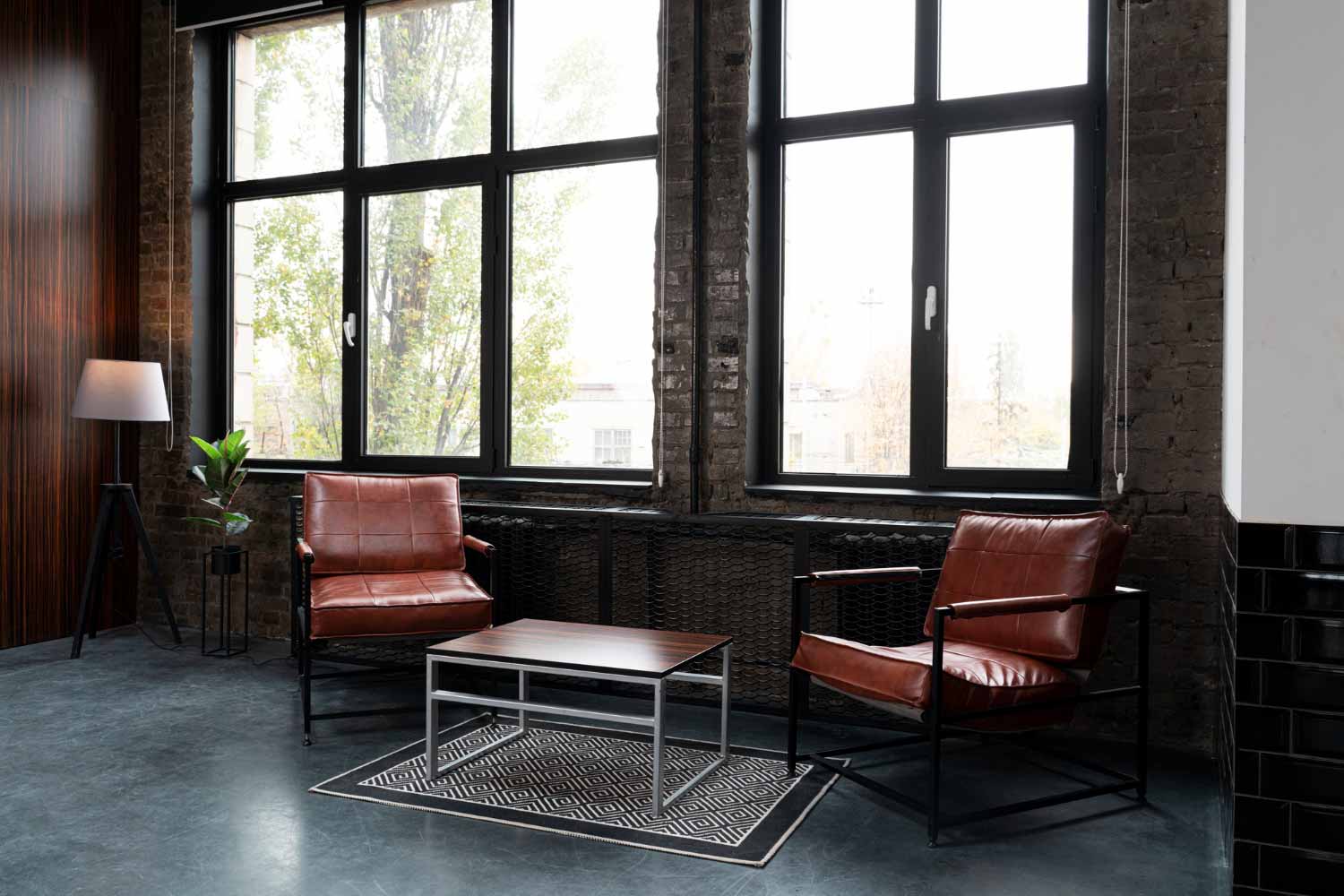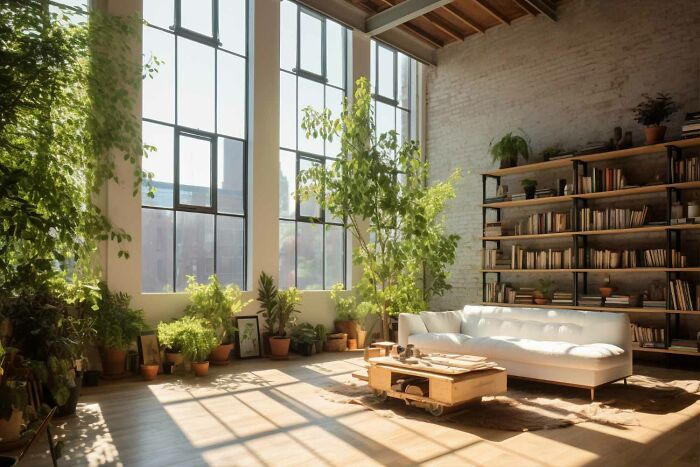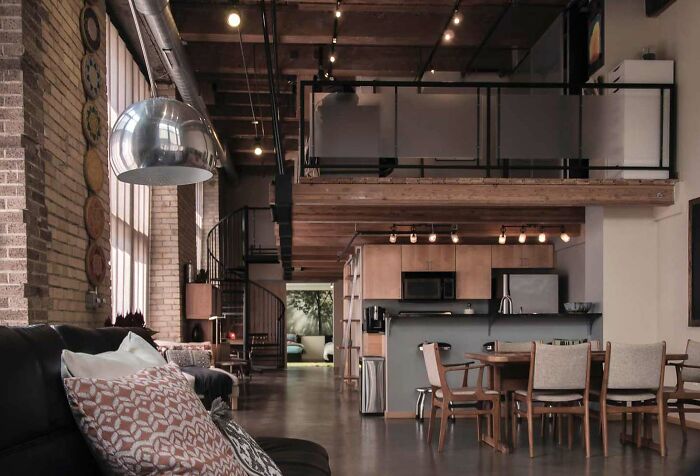
3Kviews
Industrial Design in 2024: From Industrial Revolution to Timeless Evolution
Have you ever wondered about the magic behind the things you see and use daily—your phone, your PC, your coffee cup, or perhaps the simple Coca-Cola drink with its iconic bottle? Everything you lay eyes on is crafted and produced thanks to industrial design developments.
The never-ending cycle of perpetually reinventing the wheel started with the Industrial Revolution. Since then, the world walked into the fast-paced symphony of modern living—creating products that make life easier while leaving walls unpainted in their spaces.
The Industrial Revolution shaped how we make things and the language of progress itself—creating fine stuff in a world where every curve, color, and function tells a story of innovation and development.
In short, innovation, art, technology, and creativity all come together in a single discipline. Let’s now delve into how this discipline has shaped our lives and homes for centuries.
What is Industrial Design?
 Image credits: ThisisEngineering RAEng
Image credits: ThisisEngineering RAEng
Industrial design is the discipline dedicated to solving problems and enhancing human experiences. This encompasses creatively designing products, systems, and services, making the industrial design spectrum quite diverse.
Simply put, industrial design is the professional practice of making stuff better. From a professional perspective, industrial designers are the creative force behind the scenes, turning ordinary items into extraordinary experiences.
What is Industrial Interior Design?
 Image credits: Lissete Laverde
Image credits: Lissete Laverde
Industrial design and industrial interior design share the same historical roots, tracing back to the Industrial Revolution and mid-20th-century modernism. While industrial design focuses on improving everyday products, industrial interior design extends this concept to the spaces we inhabit.
Both disciplines focus on style and function, although in different aspects—products and interiors. Together, they contribute to the art of making things work better, whether in your hands or on the walls around you.
What is an Industrial-style Decor?
 Image credits: freepik
Image credits: freepik
Industrial decor encapsulates a journey through time, seamlessly blending visually attractive rooms with practical spaces in daily life. Drawing inspiration from the 19th and early 20th centuries, it echoes the transformation of factories into homes for workers and the middle class.
This style introduces elements like exposed brick, steel, and concrete into our living spaces. Moreover, in modern days, industrial interior decor manifests in various styles.
Urban Industrial
 Image credits: Evan Wise
Image credits: Evan Wise
With glimpses of city living, this branch of industrial style aligns closely with raw, minimalist design. In this type of home decor, we can expect exposed architectural features influenced by urban elements, such as pipes and distressed materials. This style is perfect for wide-open spaces.
Rustic Industrial
 Image credits: Tim Wildsmith
Image credits: Tim Wildsmith
The rustic industrial style combines weathered wood, brick walls, expansive windows, vintage furnishings, and earthy tones. If you opt for a rustic industrial home, consider adding iron accents, wooden beams, and cement floors.
Modern Industrial Interior Design
 Image credits: vecstock
Image credits: vecstock
Modern industrial spaces stand out by artfully balancing industrial rawness and classy elegance. Expect to see sleek lines, exposed brick walls paired with plush, cozy sofas, or a minimalist design featuring wooden furniture.
Steampunk
 Image credits: steamcatco
Image credits: steamcatco
Inspired by the Victorian era, steampunk interiors feature brass and copper accents, exposed gears, bare pipes, wrought iron, and a palette of rich, dark colors. Characterized by the use of repurposed metals, leather upholstery, rustic wood, and brick walls, steampunk spaces exude a unique blend of industrial and vintage aesthetics.
Scandi-Industrial Style
 Image credits: Michael Oxendine
Image credits: Michael Oxendine
Think of the Scandi-industrial style as a fusion of raw industrial elements and Scandinavian simplicity. Scandi-industrial spaces achieve a stylish and cozy ambiance through the use of clean lines, warm vibes, neutral tones, natural textiles, and white walls.
History and Origins of Industrial Design
 Image credits: wirestock
Image credits: wirestock
Industrial house design is a rare instance where embracing the past to influence the present yields beautiful results. But how did the industrial style manage to make it to this day? Contemporary industrial-style interiors have roots tracing back to the Industrial Revolution:
First Industrial Revolution in the 1760s: Mass production emerged in Europe and the US, influencing goods, markets, and factory architecture with grid-paned windows, open spaces, and exposed brick walls for fire safety.
Second Industrial Revolution in the 1870s: In this period, industrial development took a leap forward as companies introduced larger factories featuring exposed bricks, concrete, and steel materials. This era also witnessed the invention of Edison light bulbs, propelling us into the steampunk era.
The 2000s: The industrial style experienced a massive boom as most factories underwent conversion into lofts. Particularly in regions grappling with housing shortages, the transformation of factories into industrial loft apartments with open floor plans emerged as a stylish and practical solution.
Today: Industrial-style furniture has become widespread in the present day, drawing inspiration from sleek lines, open spaces, rustic elements, and repurposed materials. Because of many changes and adaptations, we feel closer to the Scandi-industrial style characterized by open plans, faded leather, raw materials, expansive windows, and neutral palettes.
Traditional vs Modern Industrial Interior Design
 Image source: somemojointhisjojo and Ali Moradi
Image source: somemojointhisjojo and Ali Moradi
Homeowners and designers sparked a revolution by repurposing the elements they already had to create a new interior design aesthetic. When transforming SoHo lofts, warehouses, and factories into innovative home designs, they consciously preserved the raw, unfinished vibe of the existing spaces.
They chose to showcase wooden beams, brick walls, steel surfaces, and even exposed ducts. This “rebellious” act led to two distinct styles within the same discipline: modern and traditional industrial decor.
Traditional industrial design leans towards classic and ornate aesthetics, using rich materials and warm colors with a formal layout. Think of intricate carvings, detailed moldings, and a touch of traditional craftsmanship.
On the flip side, modern industrial design goes for a more contemporary vibe. Using raw materials and neutral colors, it’s all about simplicity, functionality, and a clean look. Picture open spaces, straightforward furniture, and a more laid-back, uncluttered feel.
So, traditional is like the classic, detailed grandparent, and modern is the sleek, no-fuss sibling. They’re both cool but just bring different vibes to the table.
 Image credits: Keren Fedida
Image credits: Keren Fedida
The choice between these two styles often depends on personal preferences and the space's intended purpose. Some designs may also combine elements from both styles, creating a unique blend of modern and traditional industrial decor.
Characteristics of Industrial Interior Design
Now, let’s delve into what industrial design has brought to us from the past, exploring the gritty roots of the Industrial Revolution, merging with the sleek vibes of modern times.
- Natural materials
- Ample natural light
- Vintage accessories
- Bare light bulbs
- Neutral color palette with bold contrasts
- Open floor plans, high ceiling, and exposed pipes and ducts
- Raw walls and ceiling
- Concrete flooring and parquets
Industrial Interior Design Ideas
Now that you’re acquainted with industrial interior design let’s explore how it looks in different industrial-inspired interiors. From exposed brick walls to vintage-inspired lighting fixtures, these ideas will help you create an authentic look within just a few square meters.
This post may include affiliate links.
Epitome Of Modern Industrial House Design
A tri-color palette of brown, white, and gray forms the foundation for a contemporary industrial house. A crisp white couch sits atop a stylish gray rug, basking in ample natural light, creating an inviting atmosphere. Parquet flooring, exposed wooden beams, and raw brick walls come together to infuse the space with warmth, elegance, and an industrial edge, resulting in a chic and cozy living area.
Industrial Living Room With Bright Accents
In this bright living room, exposed brick walls bring both warmth and texture. The interplay of earthy tones, unfinished walls, and parquet flooring blurs the lines between industrial and rustic design. Colored trims and vintage furniture add a touch of country style, enhancing the overall charm of the space.
Industrial Decor In A Small Space
In this studio, we witness how light taupe shades neutralize all the elements, making the room look well-designed. Creamy white walls, trims, and curtains make the space look more airy and open. A sleek black floor lamp and metallic bookshelf create a striking contrast against the parquet floor and vintage furniture. Ample natural light, neutral tones, and stylish metallic accents define this industrial-like studio as a perfect example of minimalist interior design.
Traditional Industrial Space
If you have a room with clearly defined walls and a large window, consider adding an old table and mid-century seats featuring leather upholstery. This combination of vintage furnishing effortlessly creates a traditional industrial style reminiscent of the image above. Embrace elements like cement flooring, tiled walls, and antique accessories like brass mirrors and metallic shelves. The goal is to evoke a timeless ambiance, making the space appear like it hasn’t been changed for centuries.
Scandi-Industrial Space
This cozy and modern living room features the best elements of Scandinavian interior design. Each feature contributes to the inviting atmosphere, from the wood-sloped ceiling, artwork, and decorative pendant lights to the decluttered space and light, neutral colors. Elements such as wooden tables and cand hairs, concrete floors, expansive glass, and black grid-framed windows help strike a harmonious balance, marrying the coziness of Scandinavian design with the elegance of industrial style.
Eclectic Industrial Style In Open Space
This space exudes an eclectic charm with prominent industrial influence. Everything seamlessly blends together under the generous natural light and the warm glow of Edison bulbs and metal pendant lights, except for the standout rugs and unique chairs. The walls, adorned with exposed white bricks, bring a touch of old-world charm, further complemented by the high-rise ceiling.
Contemporary Industrial Kitchen Space + Living Room
How to make an industrial-looking space with traditional elements look timeless and modern? High ceilings with exposed beams and hanging Edison lights are typical elements that never age in industrial decor. Combine gray walls and couches, a white subway tile kitchen backsplash, parquet flooring, wooden kitchen cabinets with bright chairs, and black kitchen appliances.
Open Industrial Space
Sometimes, all you need to achieve an industrial vibe is a few carefully chosen pieces of industrial-style furniture and exposed brick walls. The high ceiling makes the room feel more spacious, while the large window floods the space with natural light. Let’s not forget the brown wooden table that adds rustic charm to this beautiful mix of modern minimalism with industrial style.
Monochromatic Industrial Bedroom
In this cool monochromatic bedroom, various shades of gray take center stage. The soft gray curtains allow a subtle interplay of natural light, combining industrial chic with cozy minimalism. The weathered door stands out as the sole rustic and contrasting element in this modern and sophisticated space.
Cozy Boho Industrial-Style Living Room
Boho decor, characterized by its eclectic, free-spirited approach to interior design, embraces a mix of colors, patterns, and textures. Industrial design, on the other hand, brings these patterns, textures, and furnishings from the past to the present. The room in the image above perfectly showcases a cozy and stylish fusion of the two. Common elements include layered textiles, mismatched furniture, the presence of plants, exposed bricks, and the use of natural materials.
Japandi Industrial Interior Design
On rare occasions, three styles can be fused together for a cozy and bright room. Japandi interior design is a combination of Japanese minimalism with Scandinavian simplicity. It features elements such as a wooden parquet, houseplants in the corners, a rattan table, a mounted bookshelf, and a white couch as a centerpiece. The room is further enriched with exposed wooden beams, expansive black grid-framed windows, and brick walls, adding an industrial touch to the space.
Vintage-Inspired Industrial-Style Apartment
Vintage industrial style beautifully combines the best elements of both design worlds. The image above shows the combination of exposed brick walls with vintage furniture like a plush sofa, table, chair, and floor lamp. The inclusion of three large windows, a high ceiling with exposed pipes, and a parquet floor enhances the overall design, offering a beautiful and comfortable space that resonates with old souls.
Modern Industrial Kitchen Design
If you want a stylish kitchen but find one side of the wall undone for ages, consider leaving it as it is and embracing industrial design elements in your culinary space. Create a tidy and neat white kitchen featuring butcher block countertops, black metallic pendant lights, and concrete flooring.
When the Past Meets the Present
An industrial house design is more than just a space adorned with industrial style; it’s a story of the building’s humble origins. It’s a style that stands apart. And the very best of this style is that it’s incredibly affordable. Moreover, it’s super easy to intertwine its industrial elements with various interior styles while embracing authenticity and rugged charm in your space.
So, what do you think? Would you go for an old-fashioned house? If not, perhaps you know an old-soul panda out there who would love to learn about this. Feel free to share this piece and invite them to explore the unique charm of industrial design.
FAQs
What is the Difference Between an Interior Designer and an Industrial Interior Designer?
Their primary difference is as simple as their names define it. While both are designers for interior spaces, they specialize in different types of designs and spaces. An interior designer typically works on various residential or commercial spaces, dealing with multiple design styles for homes, offices, restaurants, and more. On the other hand, an industrial interior designer specializes in adorning spaces in industrial style for lofts, factories, or urban-inspired environments.
Is Industrial Interior Design Still Trending in 2024?
Trends in interior design have changed throughout the years. Still, our advice remains consistent: always opt for a cozy, stylish, and affordable design when adorning your house. According to Business Insider, industrial interior design, minimalism, and the color gray are OUT for 2024.
Although industrial style has enjoyed popularity for many years, it may not make it to the top list for 2024. A noticeable shift towards cozier and more inviting spaces suggests that upcoming trends might replace rugged features like exposed brick and metal fixtures.
Mid-Century Modern Industrial Design
This open space is a timeless mix of bygone eras. Exposed wooden beams, brown bricks on the walls, and a high ceiling illuminated by hanging bulbs create a typical industrial house design. The black spiral staircase turns into an instant focal point. We can also notice the mid-century touch in the combination of wooden chairs with metallic stairs. Together, these styles create an ambiance that’s both cozy and cool.
Urban Industrial Interior Decor
Urban style can elevate a small living room, and the image above is proof of this. The warm glow of Edison lights fills the room, complemented by light chocolate brown walls proudly adorned with a collection of photos. At the center of it all, a dark vintage couch and a coffee table with a concrete top form a captivating duo. This room uniquely blends urban vibes with industrial aesthetics and vintage beauty.
Farmhouse Industrial Style
A cozy combo of natural textiles and patterns is the keyword for mixing farmhouse style with industrial interior design in one space. Houseplants, exposed bricks in the walls embracing an earthy palette, and engineered wood flooring come together to create a timeless decor suitable for both small rooms and large, open spaces.
When the Past Meets the Present
An industrial house design is more than just a space adorned with industrial style; it’s a story of the building’s humble origins. It’s a style that stands apart. And the very best of this style is that it’s incredibly affordable. Moreover, it’s super easy to intertwine its industrial elements with various interior styles while embracing authenticity and rugged charm in your space.
So, what do you think? Would you go for an old-fashioned house? If not, perhaps you know an old-soul panda out there who would love to learn about this. Feel free to share this piece and invite them to explore the unique charm of industrial design.
FAQs
What is the Difference Between an Interior Designer and an Industrial Interior Designer?
Their primary difference is as simple as their names define it. While both are designers for interior spaces, they specialize in different types of designs and spaces. An interior designer typically works on various residential or commercial spaces, dealing with multiple design styles for homes, offices, restaurants, and more. On the other hand, an industrial interior designer specializes in adorning spaces in industrial style for lofts, factories, or urban-inspired environments.
Is Industrial Interior Design Still Trending in 2024?
Trends in interior design have changed throughout the years. Still, our advice remains consistent: always opt for a cozy, stylish, and affordable design when adorning your house. According to Business Insider, industrial interior design, minimalism, and the color gray are OUT for 2024.
Although industrial style has enjoyed popularity for many years, it may not make it to the top list for 2024. A noticeable shift towards cozier and more inviting spaces suggests that upcoming trends might replace rugged features like exposed brick and metal fixtures.
I just hadn't realised that industrial design contained so little 'industrial pieces'.
I just hadn't realised that industrial design contained so little 'industrial pieces'.

 Dark Mode
Dark Mode 

 No fees, cancel anytime
No fees, cancel anytime 


















































